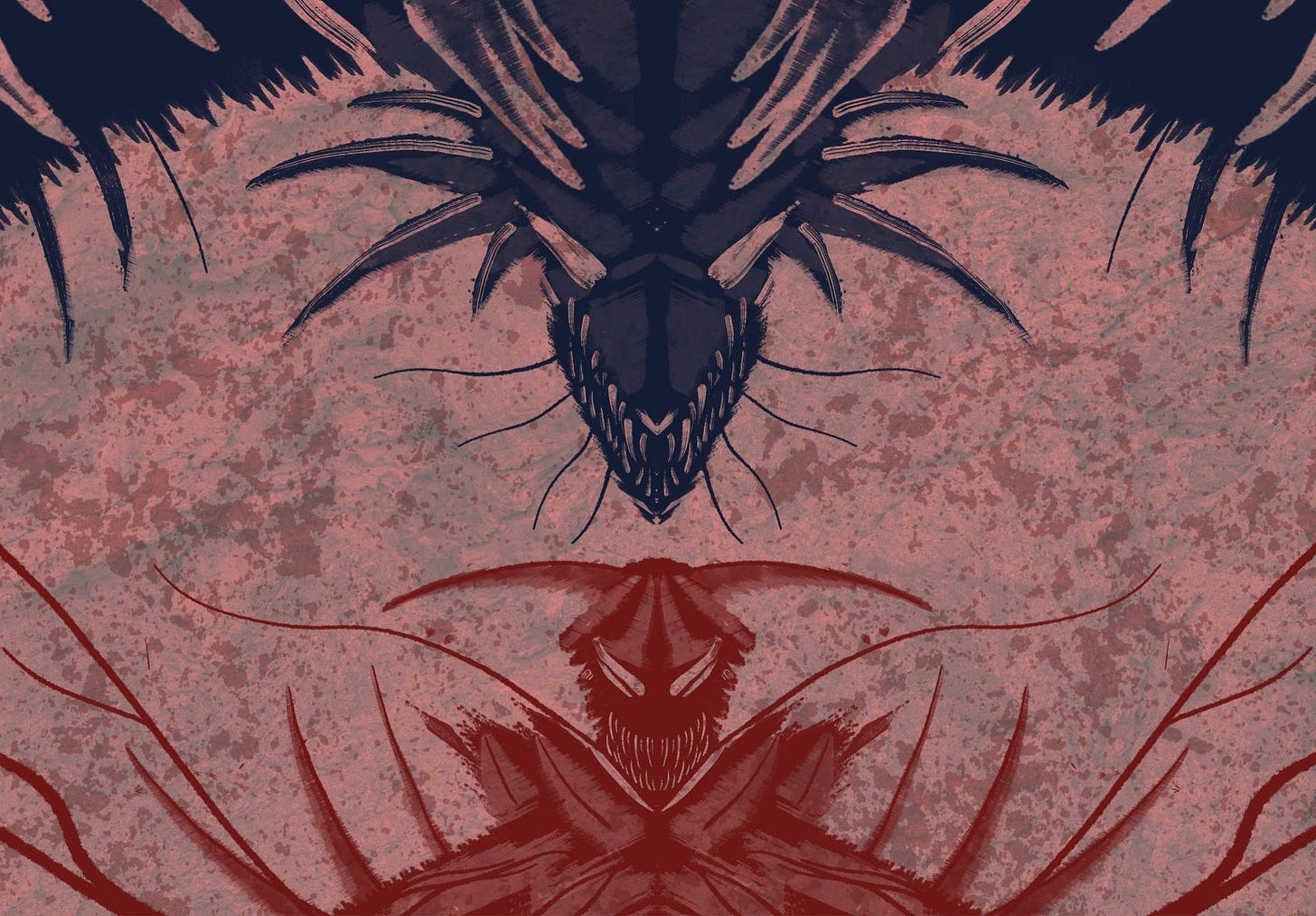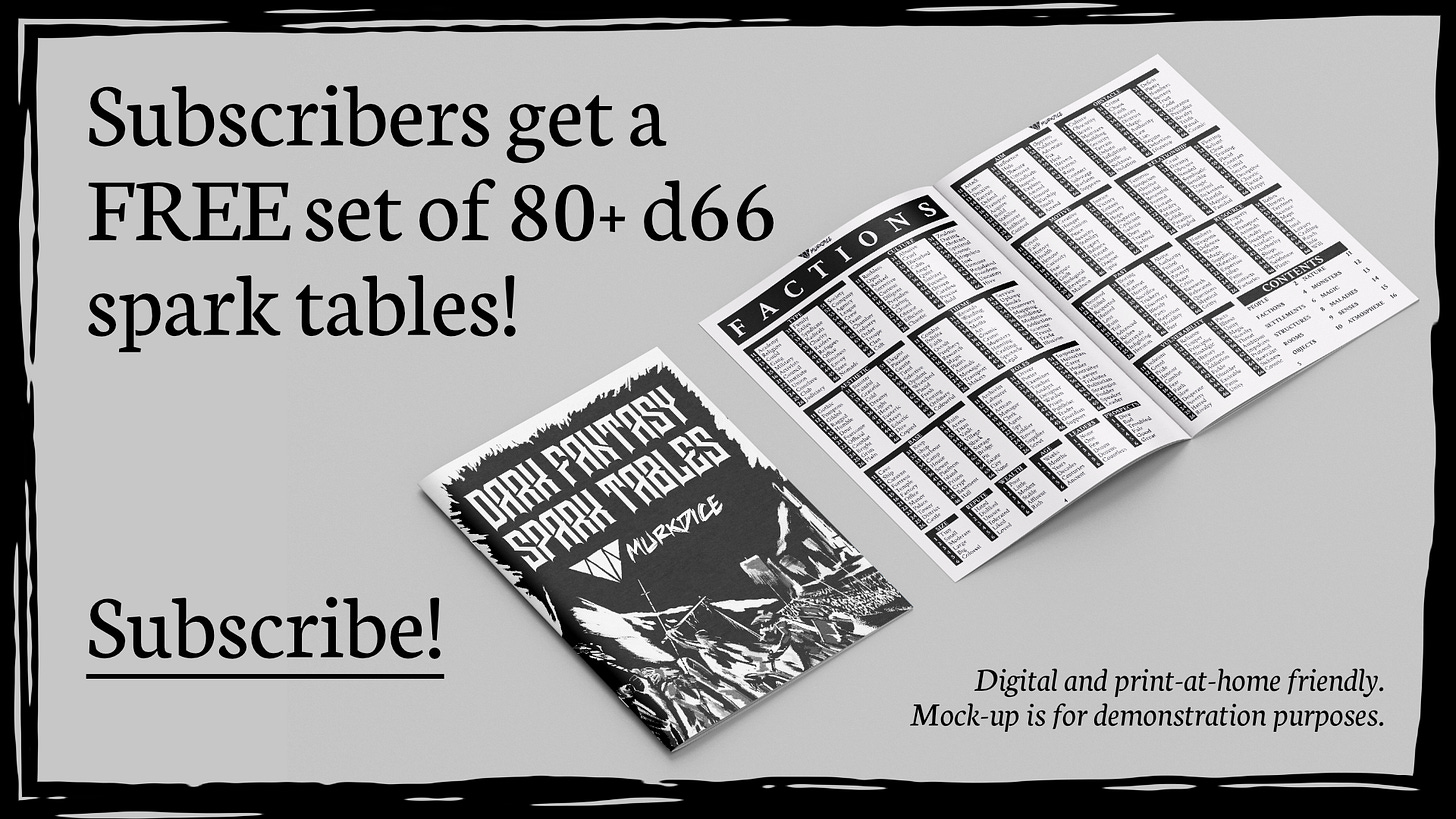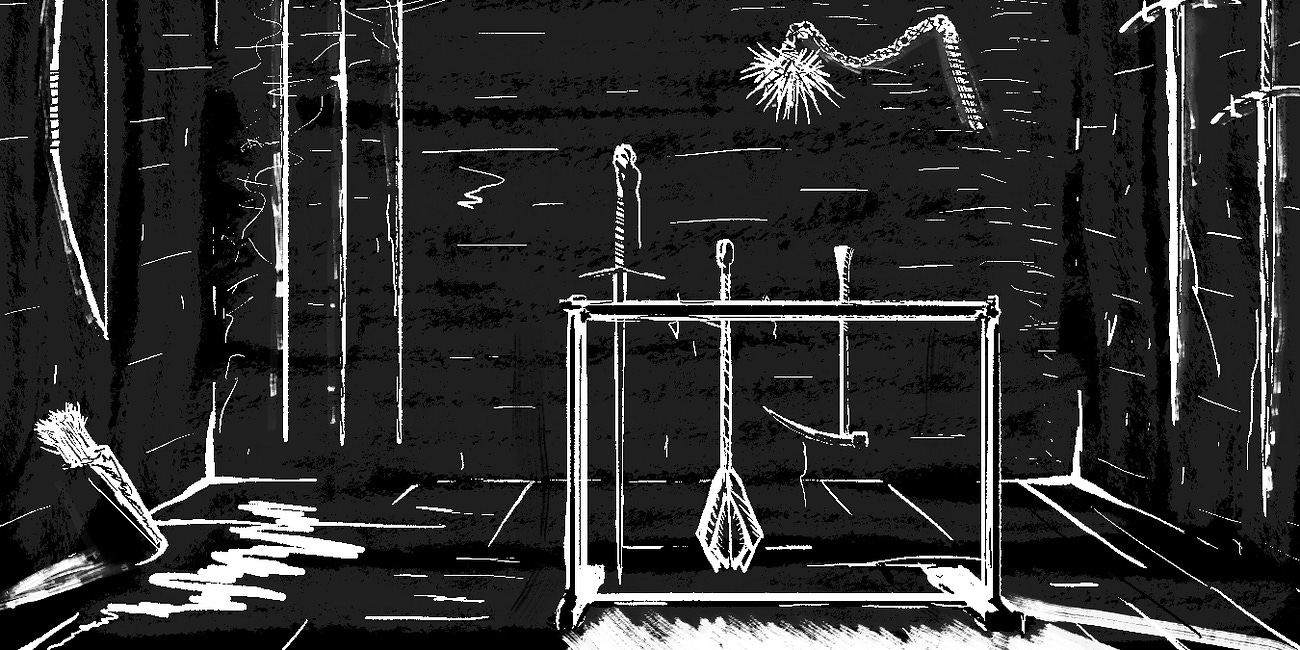This article contains affiliate links, meaning I get a commission if you make purchases using these links, at no cost to you.I rarely design encounters as a ‘combat encounter’. I like my players to be able to engage with encounters in all sorts of ways. I’m also not prepping battlemaps and ‘tactical objectives’. That said… I do run some combat and I have a kind of playbook that I use to keep it interesting.
I’ve noted some systems and modules that I’ve found inspiring for these tips.
1. Make it fucking scary
Mothership, Call of Cthulhu, Forbidden Lands
Combat feels engaging when there is real possibility of losing something significant. Not a temporary setback, a permanent loss.
Not every encounter needs to be a 1-round TPK risk, but your players should feel that any encounter can be or can become a 1-round TPK risk.
Violence is horrifying and if you lean into that, players do not get bored. See combat as a granular horror sequence where every moment matters.
2. Use the environment
Willow, Gradient Descent, Witches of Frostwyck
Good adventure locations have interactive environments. I’m not talking about ‘combat arenas’ here, just good environmental design. When you run combat, look at the location and the features it has. Consider how creatures can utilise them, or if anything can go wrong in the environment as a complication.
You dodge the charging ogre but it hits the fish tank and now the giant squid is free!
Encourage your players to use the environment too.
3. What does the opposition want?
Cairn 2e, Symbaroum, Blades in the Dark
When creatures fight, there is a reason for it. This helps you understand what creatures are trying to get out of the combat. Examples:
Resources. The opposition wants a magic item, or ya know, the PCs' flesh.
If they succeed in getting some resources, do they retreat?
Security. The creatures are defending a location or protecting an important NPC.
If the attackers or intruders retreat, do they pursue?
Honour. They are fighting as a matter of principle.
When has the opposition paid the price?
Survival.
Do they seek to flee as quickly as possible or to eliminate this threat for good?
4. Make it quick. If slow, evolve it.
Mork Borg, Into the Odd, Mythic Bastionland
Quick and brutal combat is, to me, the most engaging. Every moment is interesting because we’re walking on the edge of significant loss.
If combat is dragging, change things up.
Good adventure locations have tools like encounter tables, event tables, or hazards like rising water. Remember that these are still functioning in combat. Consider rolling a fresh encounter that gets attracted to the din of battle or an environmental change. I tend to deploy this by round 3, 3+ rounds feels like a long combat to me.
Change up your tactics too.
5. Strengths and weaknesses
Symbaroum, Coriolis: The Great Dark
I don’t dig the ‘if you happen to suggest targeting this specific part of the creature, it gets instantly downed’ vibe. Creatures-as-puzzles aren’t necessarily bad design but they can be if we build in specific solutions to fights rather than leaving things open. Just think about how boring trolls being weak to fire is when you have to fight one a second time.
To create a more open sandbox problem, what we want are strengths and weaknesses for our opponents. A creature being slower than the party is interesting: how is it going to pursue them or flee from them? As a strength, we can give it means to grapple targets to stop them fleeing. Ohhhhhhhh I get why oozes are so fun now.
Bonus: Use Wounds Without Crunch
Use my free combat hack, Wounds Without Crunch. It transformed how fun my combats were whilst keeping them snappy.
Wounds Without Crunch gives you some important stuff:
Players and opponents get to make interesting choices most turns, even if they are simply swinging a sword again. It solves the problem of keeping more grounded combat choice-focused whilst maintaining speed.
Effects beyond damage happen with most hits, so the situation is always evolving.
Major wounds play into the horror of violence.
You can create unique tables for monsters that give them heaps of flavour.
Extra Bonus: Use a Nasty Armoury
Add on a Nasty Armoury (free) if you want weapon choice to have more meaning too.
A Nasty Armoury gives weapons a heap of coolness:
Weapons provide twists on the wounds system, stuff like a mace dazing targets as well if you knock ’em prone.
Players are incentivised to pack different tools for different jobs.







My favorite deadly repercussion is having a creature drag a KO’d player towards something like a ravine during the combat. It get’s such a good reaction.
I also wrote a small article on landmarks a while back that I think goes well with the interactive environment. Basically it’s utilizing central structures in combat and in the background of other scenes to bring in that feeling of an environment we can impact while laying a consistent foundation for the story to live in. Like fighting around the statue in town, and seeing it through the window in the old hags house, and watching torch lights glow past it as a secret army enters town. https://open.substack.com/pub/holisticdice/p/landmarks
Great tips for better combat as well as reference to past articles to add more layers.